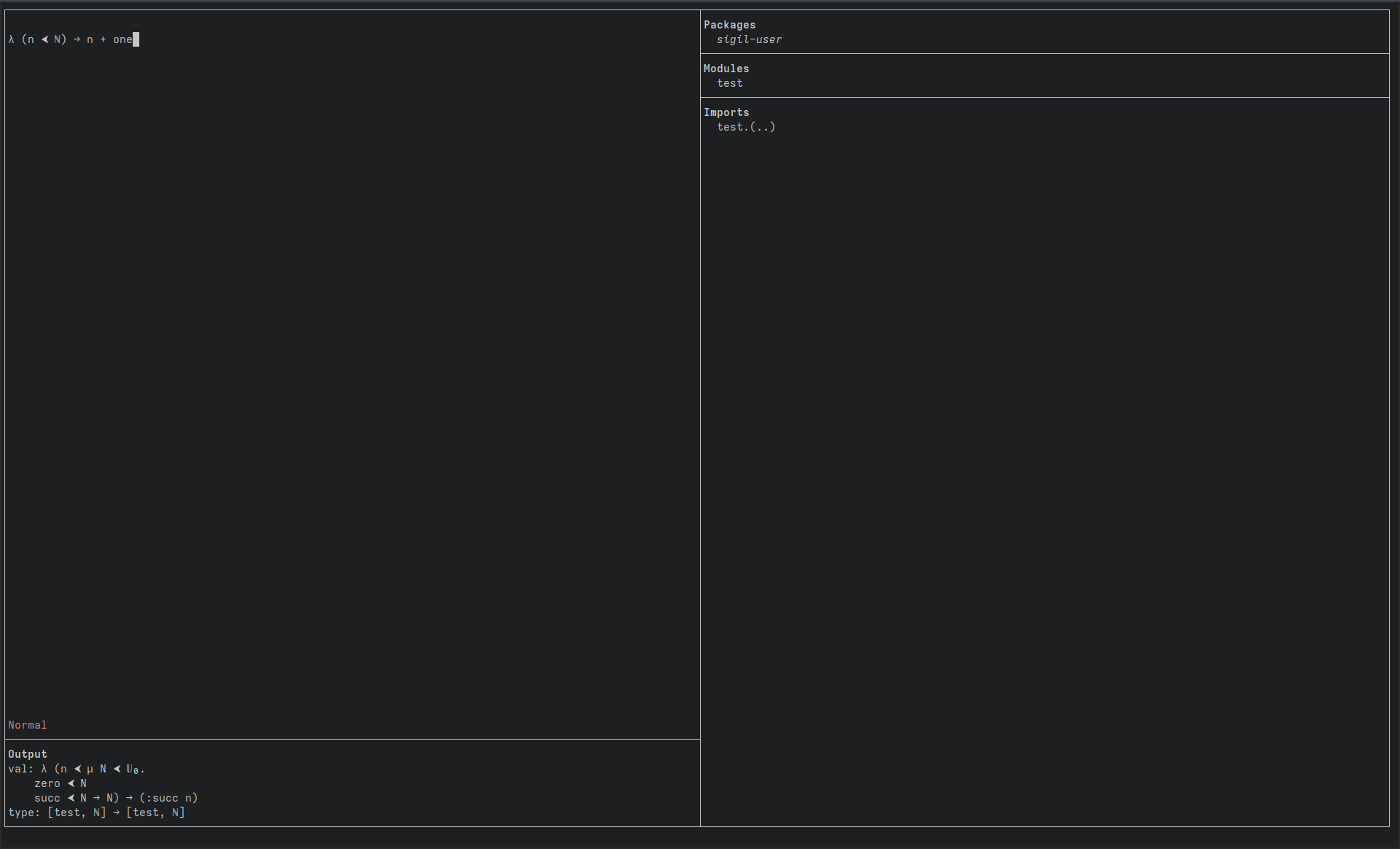Sigil Tooling
Sigil / Tooling
Executable
The sigil executable can be launched in 4 modes - when starting the program, you MUST choose a mode (provided as a command-line argument). The invocation for each mode is as follows:
sigil interactivesigil interactive-linesigil serversigil compile
Interactive Mode
When launching in interactive mode, a TUI much like the one below will open. This interface is divided into 5 panes: These panes can be navigated between with the Ctrl + up/down/left/right arrows.

On the left, the top pane is the text input area. This is where you start. Vim keybindings are available for editing (not all are available) (sorry if you don't like vim). Further, the following commands will also be available in Normal mode:
; e e→ Evaluate an expression; e q→ Run a query; m f→ Load module from file (will prompt for filename); m i→ Add module import (will prompt for import statement)Spc + q q→ Quit
When in one of the three panes on the left (the package, module and import the up/down arrows can be used to select a package/module/import statement), and the 'd' key will delete it.
Unicode Character Input
The syntax of Sigil makes heavy use of unicode characters. The text input area allows these to be implemented in through special 'codes'. To use a code type a semicolon ';' followed by a sequence of keys corresponding to the glyph.
| Letter | Code | Mnemonic |
|---|---|---|
| λ | gl | greek l |
| μ | gm | greek m |
| φ | gf | greek f |
| ι | gi | greek i |
| ρ | gr | greek r |
| 𝕌 | sU | struck U |
| ≜ | de | define equal to |
| ⮜ | le | left pointer |
| → | to | |
| ﹨ | \ | |
| ⟨ | < | |
| ⟩ | > | |
| ∃ | ex | exists |
| ∀ | fa | for all |
| ≅ | ~== | |
| ∈ | in | inhabits |
| … | … |
Subscripts are written with an underscore, e.g. _2 → ₂, superscripts with a
caret, e.g. ^2 → ².
Interactive Line Mode
WIP
Server Mode
WIP
Compile Mode
Not implemented